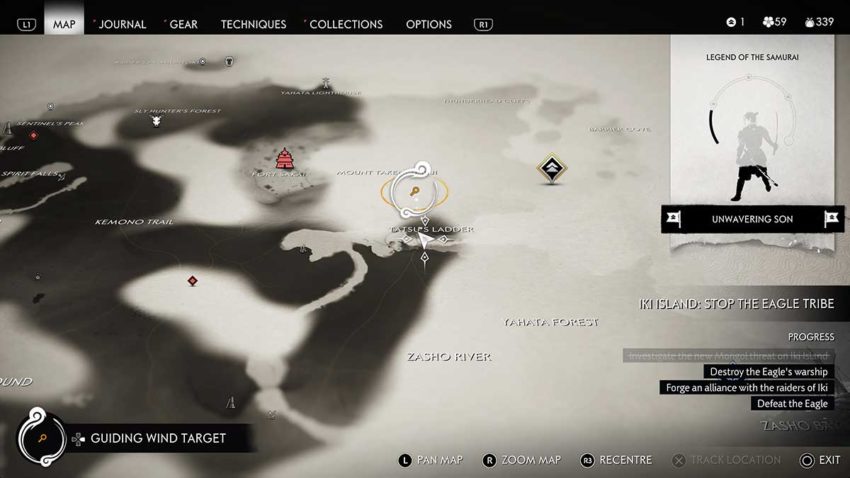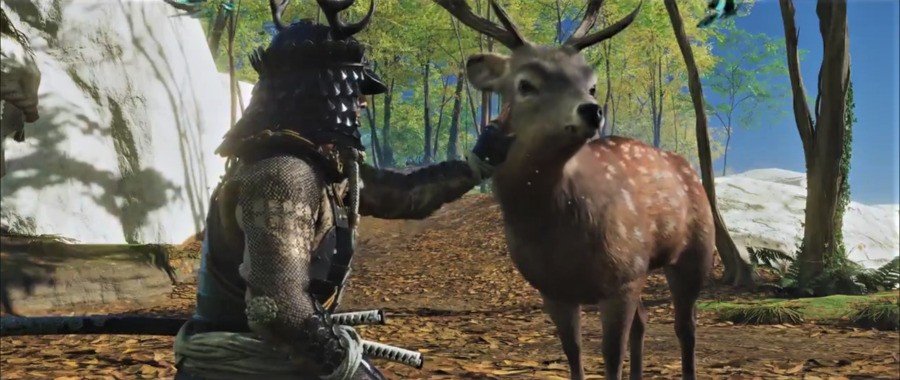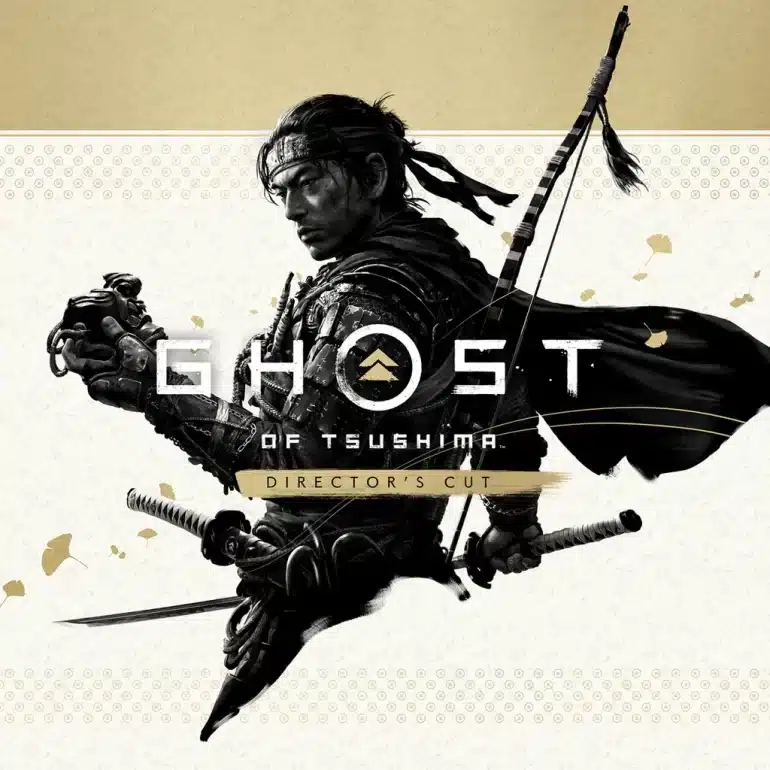The Ghost of Tsushima Director’s Cut adds new content and features that improves on what is arguably one of the best games of last year. It adds a new co-op mode for Ghost of Tsushima Legends. The Director’s Cut has improved lip syncing for the Japanese audio for those of us who want a more authentic Japanese Cinema experience. It adds a range of upgrades that make use of the PS5’s hardware and integrated the Dual Sense’s haptic feedback and adaptive triggers to really immerse you in the fantasy of being a Samurai. While those are all impressive, the real reason why people would want to get the Director’s Cut is the new content set in the Island of Iki.
You can choose to visit the new location shortly after you have completed act 1 of the main game. There is a coastal village where a new Mongol Leader has been poisoning the villagers. Completing this short encounter will give you the ability to sail to Iki Island. While it is accessible this early, I would suggest that you don’t visit Iki until after you complete the main game. It will make your journey to Iki more impactful in a way I cannot discuss without spoiling things.

If Ghost of Tsushima was Jin dealing with the expectations of his Adoptive Father Figure, Lord Shimura, then his adventure in Iki island is him dealing with his biological father, Kazumasa Sakai. This is due to the fact that Iki island is where Kazumasa was murdered. Jin now has to come to terms with the idea that he has to help the people that not only hate his family but hate all samurai in general to help free the Japanese people from the Mongols. This is reflected in game by Jin not having access to the Sakai Clan Armor at the start of the expansion. He instead uses a modified version of the armor called “Jin from Yarikawa”, a Sakai Clan armor without any of the clan Sakai markings.
The big bad of Iki Island is called The Eagle. While you don’t interact with her that much in the story, what she does to Jin is actually one of my favorite parts of the Iki Island Expansion. Early in the story Jin gets captured by the Eagle and is forced to drink the poison that she used to terrorize the people of the Island. What this does is give voice to Jin’s inner demons through visions that disrupt gameplay. It makes him reflect on his history with his father and his actions in Tsushima. This is a great way to show where Jin’s mental state is at when he is helping people who would kill him if they find out who he is.
In terms of enemy types, there is only one new addition: The Shaman. The shaman is a spear-type enemy with the ability to chant which buffs his fellow Mongols. This means most encounters boil down to you tracking down the shaman before you can effectively fight the other enemies. This changes the combat dynamic a little bit but I would have preferred one or two more for more variety. Which is honestly doable as there are special enemies already in the game found in the Legends Mode. In fact, the Shaman is a modified version of the Disciples of Iyo from Ghost of Tsushima Legends.

Another Combat-adjacent addition is the ability for your horse to charge at enemies. Pressing the L1 buttons makes your horse charge and run over enemies. This uses up your resolve but the damage it can do is devastating and the sound design and controller vibrations make it so satisfying when you do pull it off.
Iki Island is considerably smaller and by extension not as diverse as the island of Tsushima, Iki still manages to set itself apart by showing us a land that is not only undergoing a Mongol Invasion but one that is also still healing from a previous conflict. You will find villages that has been recently been burned down as well as villages that have long been abandoned, reclaimed by nature.
There are a handful of interest points to discovered all around the island. Some of which are carry overs from the main game like the Bamboo Slicing mini game and the Haikus. There are also newer ones that are honestly quite engaging. There are animal sanctuaries where you play your flute to befriend the animals. There are shrines where if you solve their riddle, you will be rewarded with content that would make any PlayStation fan smile from ear to ear. And lastly, my favorite, the archery challenges where you are timed on how fast you can hit all the lanterns in the area.

With all the improvements the director’s cut added to Ghost of Tsushima, it still did not address one of my biggest issues with the game. The climbing and parkour can still feel both too restrictive and strangely too free. I still have trouble trying to climb down a cliff since Jin’s feet can often feel like it is stuck to the ground by a magnet. Yet when doing jumping puzzles, that magnetic lock on the ground can sometimes be nonexistent. I can’t count the times I have fallen just because Jin did not magically click into the next ledge for some reason. It is a small problem but it really takes me out of the experience.
Outside my issue with traversal, the only issue the Director’s cut has has nothing to do with the game at all. The pricing is confusing for some people. If you don’t already own base Ghost of Tsushima game, the Director’s Cut costs $59.99 on PS4 and $69.99 on PS5. Upgrading the standard PS4 version to the PS4’s Director’s Cut costs $19.99, while upgrading from the standard PS4 version to the PS5’s Director’s Cut costs $9.99. Getting the Director’s cut on the PS5 from a PS4 base game is $29.99.
With all the upgrades and new content that the Director’s Cut offers, it is the definitive way to play Ghost of Tsushima.
